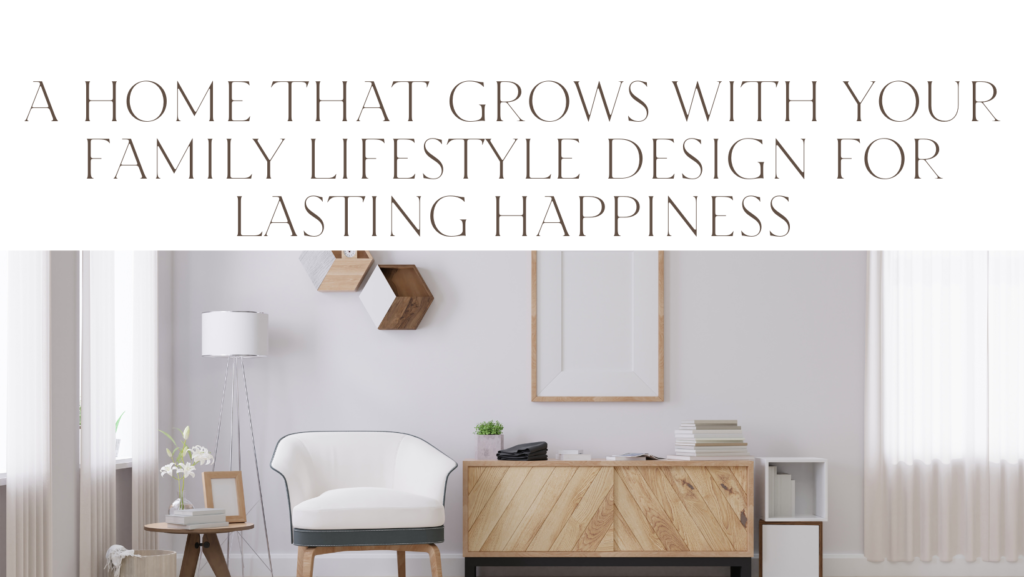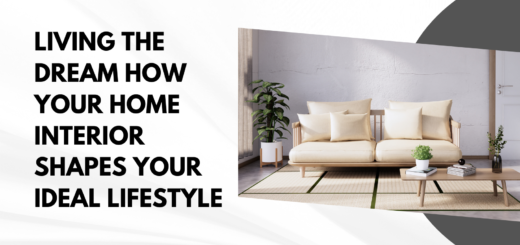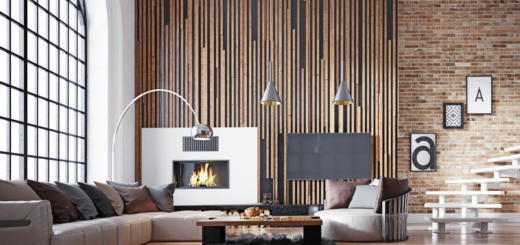A Home that Grows with Your Family Lifestyle Design for Lasting Happiness

A Home that Grows with Your Family Lifestyle Design for Lasting Happiness
When it comes to building or renovating a home, many people envision more than just a structure. They want a space that evolves with their family, promotes happiness, and provides lasting memories. This is where lifestyle design steps in, a concept that goes beyond conventional architecture and interior decoration. In this article, we’ll explore the idea of designing a home that grows with your family, offering lifestyle-enhancing features and ensuring lasting happiness for all its residents
Understanding Lifestyle Design
A Home that Grows with Your Family Lifestyle Design for Lasting Happiness
Definition of Lifestyle Design
Lifestyle design is the practice of creating living spaces that align with individuals’ or families’ unique values, needs, and aspirations. It involves thoughtful planning and design that caters to the residents’ way of life, ensuring that the home supports their daily activities and long-term goals.
Key Principles
Lifestyle design is guided by several key principles that contribute to a harmonious and fulfilling living experience:
Personalization: Tailoring the home’s design to reflect the family’s personality and preferences.
Functionality: Ensuring that the space serves its intended purpose efficiently and effectively.
Flexibility: Designing with adaptability in mind to accommodate changes in lifestyle and family dynamics.
Sustainability: Incorporating eco-friendly and energy-efficient elements for a greener living environment.
Creating a Home for Your Family
A Home that Grows with Your Family Lifestyle Design for Lasting Happiness
Assessing Your Family’s Needs and Goals
Before diving into the design process, take the time to evaluate your family’s needs, habits, and future aspirations. Consider the number of family members, their ages, hobbies, and lifestyle preferences. This assessment will lay the foundation for a home that caters to everyone’s unique requirements.
Multifunctional Spaces for Versatility
In a home designed for lasting happiness, versatility is key. Create multifunctional spaces that can adapt to various activities. For example, a home office can also double as a guest room, and a playroom can transform into a study area. Such adaptability ensures that the home remains relevant as your family grows and evolves.
Emphasizing Safety and Comfort
A happy home is a safe and comfortable one. Implement safety features such as secure windows and doors, rounded edges for furniture, and non-slip surfaces. Additionally, invest in comfortable furniture and bedding to enhance overall well-being.
Designing for Lasting Happiness
A Home that Grows with Your Family Lifestyle Design for Lasting Happiness
Incorporating Nature and Natural Light
Natural elements have a profound impact on our well-being. Design your home to maximize natural light and incorporate green spaces or indoor plants to bring nature indoors. This connection with the outdoors fosters a sense of calm and happiness.
Promoting Social Interaction
A home designed for lasting happiness encourages social interaction among family members. Consider open floor plans that facilitate communication, communal areas for gatherings, and comfortable seating arrangements that promote face-to-face interactions.
Prioritizing Personal Space
While social interaction is vital, having personal space is equally essential. Ensure that each family member has a private retreat, whether it’s a cozy reading nook, a private study, or a meditation corner. This balance between social and solitary spaces contributes to overall happiness.
Sustainable Living in Your Home
A Home that Grows with Your Family Lifestyle Design for Lasting Happiness
Energy-Efficient Solutions
Integrate energy-efficient appliances, lighting, and HVAC systems into your home. Not only will this reduce utility bills, but it also lessens your environmental impact.
Eco-Friendly Materials
Choose eco-friendly building materials that are renewable, recyclable, or biodegradable. From flooring to paint, there are plenty of sustainable options available.
Waste Reduction Strategies
Implement waste reduction strategies such as composting and recycling systems. Minimizing waste contributes to a greener lifestyle.
Future-Proofing Your Home
A Home that Grows with Your Family Lifestyle Design for Lasting Happiness
Adaptable Spaces for Changing Needs
Design your home with adaptable spaces that can easily be repurposed as your family’s needs change. This forward-thinking approach ensures that your home remains functional for years to come.
Smart Home Technology Integration
Embrace smart home technology that simplifies daily tasks and enhances convenience. From automated lighting to smart thermostats, these innovations make life more comfortable and enjoyable.
Conclusion
A Home that Grows with Your Family Lifestyle Design for Lasting Happiness
A home that grows with your family is more than just bricks and mortar; it is a reflection of your dreams and aspirations. Lifestyle design brings a unique approach to creating living spaces that evolve with your family, prioritize happiness, and foster lasting memories. By understanding your family’s needs, incorporating nature, promoting social interaction, and embracing sustainability, you can create a home that stands the test of time.
FAQs
Q: How can I personalize my home to reflect my family’s preferences?
A: Consider using custom decor, family photos, and personalized artwork that hold sentimental value.
Q: What are some eco-friendly building materials I can use in my home?
A: Options include bamboo flooring, recycled glass countertops, and low-VOC paint.
Q: How do adaptable spaces benefit my family in the long run?
A: Adaptable spaces allow you to repurpose rooms as your family’s needs change, saving both time and money.
Q: Can smart home technology really make a difference in daily life?
A: Yes, smart home devices can streamline tasks, increase energy efficiency, and add convenience to your lifestyle.
Q: How does natural light affect our well-being?
A: Natural light can improve mood, enhance productivity, and regulate sleep patterns.



